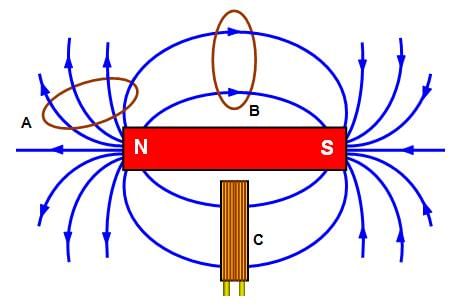|
Fill in the blank: The magnetic field lines emerge from the ___ pole and converge at the ___ pole. |
Card: 5 / 32 |
|
What happens to the direction of the compass needle when an electric current passes through a metallic conductor? |
Card: 7 / 32 |
|
If you hold a current-carrying straight conductor with your right hand, with your thumb pointing in the direction of the current, then your fingers curled around the conductor show the direction of the magnetic field. |
Card: 10 / 32 |
|
Fill in the blank: A solenoid acts like a magnet with one end as the ___ pole and the other as the ___ pole. |
Card: 11 / 32 |
|
True or False: The Earth wire provides a high resistance path to protect against electric shock. |
Card: 15 / 32 |
|
False; the Earth wire provides a low resistance path for current in case of leakage. |
Card: 16 / 32 |
 Unlock all Flashcards with EduRev Infinity Plan Starting from @ ₹99 only
|
|
An electromagnet is a magnet created by electric current passing through a coil, which can magnetize materials placed within it. |
Card: 18 / 32 |
|
Fill in the blank: The intensity of the magnetic field is indicated by the proximity of the ___ lines. |
Card: 19 / 32 |
|
What happens to the magnetic field strength as you move further from a current-carrying wire? |
Card: 21 / 32 |
|
Inside a solenoid, the magnetic field lines are straight and parallel, indicating a uniform and strong field, while outside, the field is weaker and diverges. |
Card: 24 / 32 |
|
Fill in the blank: The magnetic field lines do not ___ because it would indicate multiple directions at one point. |
Card: 27 / 32 |
|
How can the direction of motion or force on a current-carrying conductor in a magnetic field be determined? |
Card: 29 / 32 |
|
Overloading occurs when the current drawn exceeds the conductor's carrying capacity, leading to potential hazards. |
Card: 32 / 32 |


























